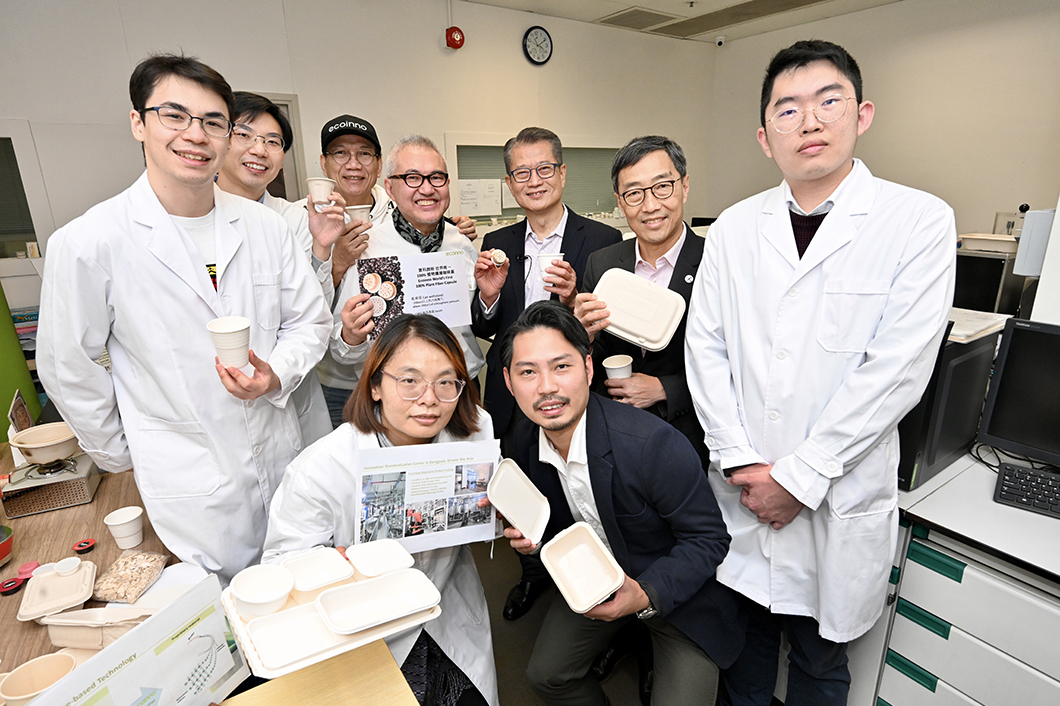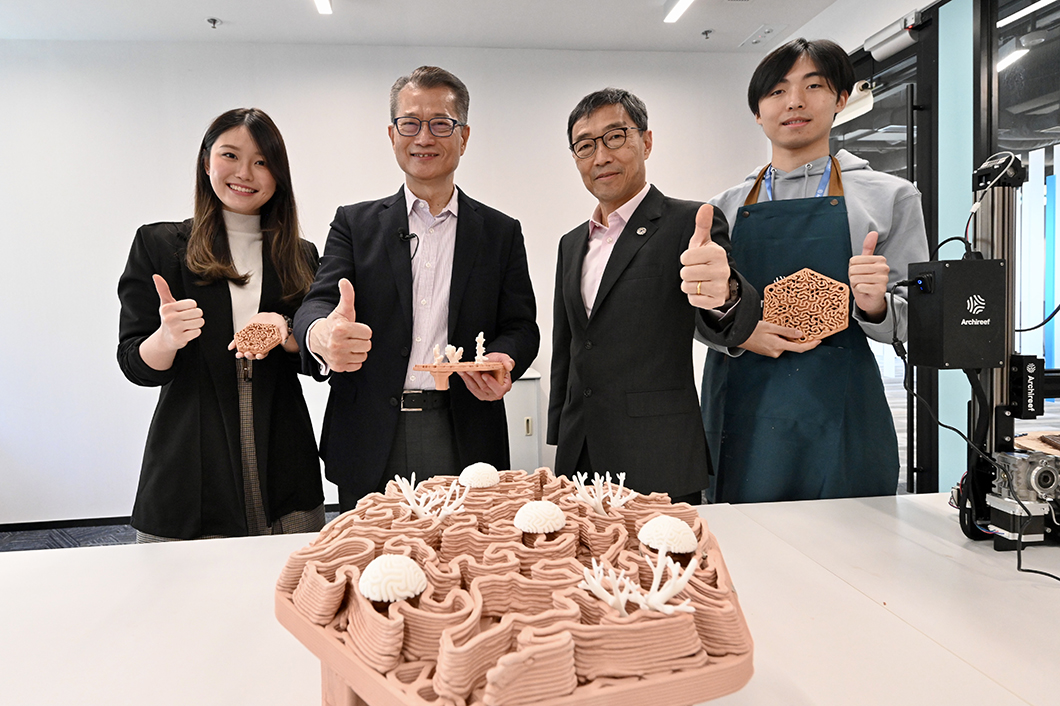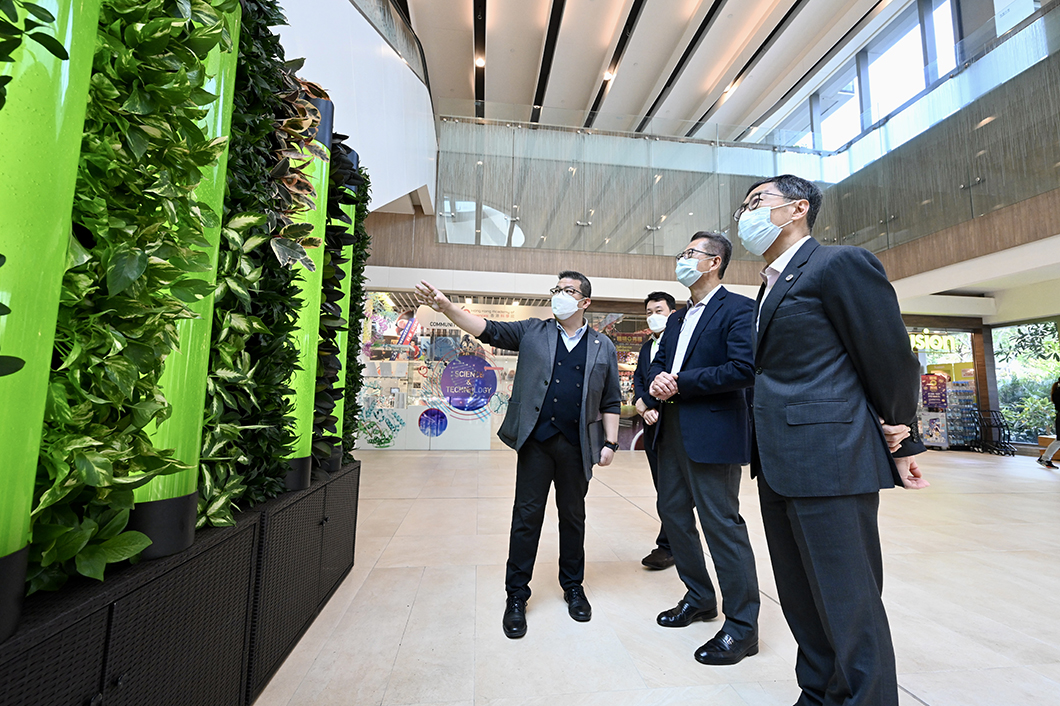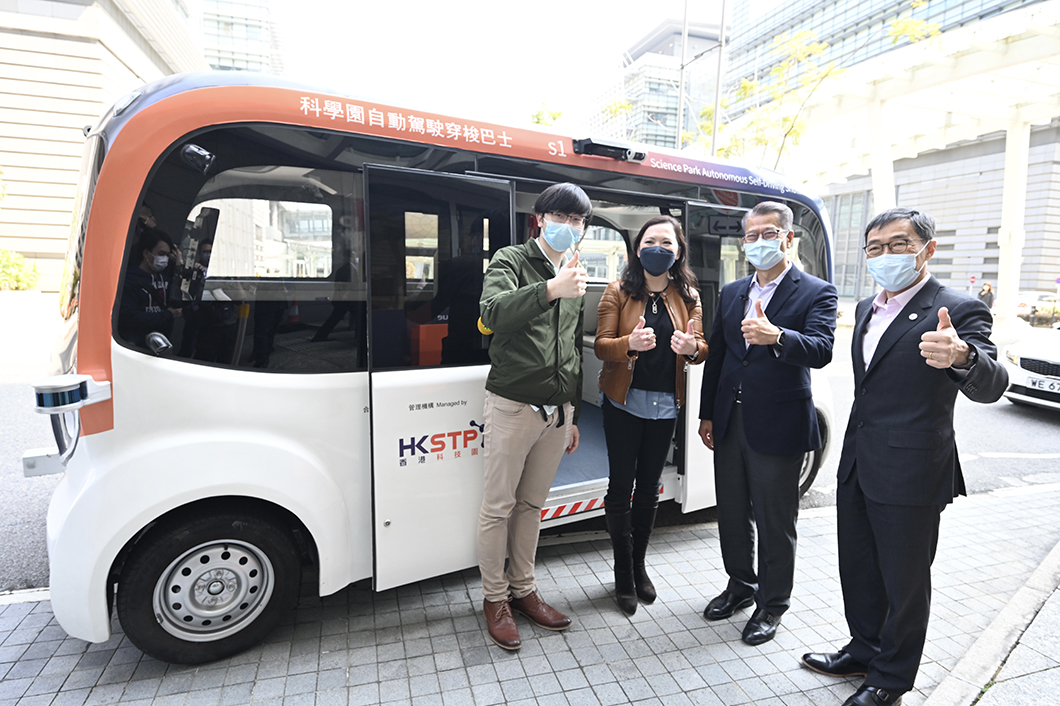Blog
Be the Green Leader
Last week, I presented the Budget for the new financial year, with more than half of the contents devoted to pursuing economic growth, which is with the view to pushing forward our economy towards high-quality development. Three key areas of development, namely digital economy, third generation Internet (Web3) and building of an international green technology and green finance centre, have been highlighted. I have also proposed the lines of thinking and measures we should take to facilitate our active alignment with national development strategies and promote the development of the "eight centres".
Innovation and technology (I&T) are the drivers for economic growth. They open up opportunities for accelerating high-quality development. By addressing problems with new solutions and breaking limitations with new thinking, we can keep resolving difficulties that beset our market. By doing so, we can create value continuously and take lead in pursuing more vibrant development of our economy with ample opportunities.
Mr Michael WONG, the Deputy Financial Secretary, and I visited a number of local green technology start-ups in Cyberport and the Science Park respectively yesterday.
We are pressing ahead with the development of digital economy in four major directions, namely digital infrastructure, cross-boundary data transfer, digital transformation and human resources support. The Budget has announced studying the development of a supercomputing centre. It has also put forward measures to help expedite the digital transformation of small and medium sized enterprises, having taken into account the recommendations of the Digital Economy Development Committee. As for Web3, it has opened up a new trend in Internet services with the use of blockchain as its core technology to push forward a disintermediated, safe, transparent, low-cost, efficient and sharing-based business model, nurturing a new wave of innovation in commercial and other applications with huge development potential.
Green technology and green finance are major international trends. Statistics indicate that the global market size of green technology will reach US$417.4 billion in 2030, with an annualised compound increase of 31.5% as compared with that in 2021, at US$35.5 billion. It will prove to be a huge market. However, throughout the world, there has not yet emerged a world-leading industrial cluster of green technology and green finance. While our country is marching the "dual carbon" goals, we have also mapped out the way forward for decarbonisation. With a number of quality local green technology enterprises and our strengths as an international financial centre, Hong Kong is definitely capable of better integrating green technology with green finance, with a view to leveraging the forces of these "dual engines" to accelerate the development of the industry. The building of an international green technology and green finance centre will open up new horizons for Hong Kong.

|
| Ecoinno (H.K.) focuses on the research and development (R&D) of new eco-friendly materials, producing disposable tableware that better protects the environment. |

|
| Archireef designs fabricated terracotta structures for use in the restoration of corals and the marine ecosystem. |
In fact, Hong Kong has already nurtured and pooled together a group of high-quality, forward-looking, innovative and passionate green technology companies. Yesterday, Mr Michael Wong, the Deputy Financial Secretary, and I visited two I&T flagships in Hong Kong respectively, namely Cyberport and the Science Park, and met with a number of green technology start-ups to understand their I&T and development needs. I strongly feel that the dual green strategy proposed in the Budget is indeed opportune, and is a necessary path to promote green development in Hong Kong.
There are more than 100 green technology enterprises in the Science Park. One of them applies 3D printing technology in an underwater coral and ecosystem restoration project by designing fabricated terracotta reef tiles as a "foundation" structure for corals to grow on. Such efforts help restore the beautiful marine habitats and contribute to the marine carbon sequestration. This local start-up grew in the Science Park, has gained rapid expansion upon recognition by and investments from investors from the Middle East, thus facilitating a green dream venture to go beyond Asia.
Another start-up produces disposable tableware by developing new green materials. Compared with other existing paper-based tableware which still contains plastic in general, the tableware developed by this I&T start-up is entirely de-plasticised, which is more effective in protecting the environment. The tableware can be directly heated, and the relevant technology may be subsequently used to develop more new products. Another company makes use of aquatic microalgae to help reduce carbon dioxide indoors. The carbon reduction effect of a seemingly ordinary "plant wall" is indeed several times greater than that produced by trees of the same weight.

|
| NAMI makes use of aquatic microalgae to build a "plant wall", the carbon reduction effect of which is several times greater than that produced by trees of the same weight. |

|
| I also took a ride in the unmanned vehicle developed by the Urban. Systems. |
Meanwhile, Michael visited three green technology start-ups in Cyberport. One of them focuses on green living and urban farming technology. Its team has developed a hydroponic machine to grow fresh vegetables through automatic adjustment of temperature, spectrum, relative humidity, pH content, etc. Another start-up concentrates on smart technology for building management, making use of artificial intelligence, big data and Internet of Things to facilitate energy saving and decarbonisation in buildings in order to achieve sustainable development. Specialising in wind force, solar energy and green hydrogen energy, the third start-up develops and promotes green technology, renewable energy and zero carbon energy technology.
Each of these start-ups has its own specialties and characteristics, and at the same time they have one thing in common: the passion and dreams for protecting the environment and promoting green development. Their stories also bring up a key issue: green technology development requires solid foundation of scientific research and technological development; but investment, financing and business management support as well as market research and promotion are equally important. Collaboration across sectors will help us lock onto the problems, explore and develop solutions and provide support for applications, thereby better facilitating the promotion of an active cycle for the green technology industry as a whole from innovation and R&D, commercialisation of R&D outcomes to mass production and a complete and vibrant industry chain. Building such a highly co-ordinated and interactive ecosystem will certainly boost and accelerate our green technology development, which will attract investment, enterprises and talent from all over the world to Hong Kong, making Hong Kong a global green leader.
February 26, 2023